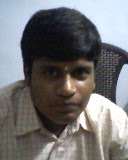Our aging population is increasingly concerned about the availability and affordability of adequate health care. A growing number of people are realizing that what we refer to as our “Health-Care System,” which consists primarily of medical doctors, surgeons, drugs and hospitals, should be more accurately labeled as our “Ill-Health-Care System.”
Medical services have become very efficient at diagnosing what is wrong with older people. Physician services and the advent of antibiotics have given doctors excellent control of infectious diseases. Hospital and surgical services for illness and injuries have become so proficient that many who would have died at 50, 60 or 70 now live longer.
Many people assume that because the elderly are living longer, they are in good health. Certainly a small percentage of them are, but many aging people suffer from serious and disabling health problems. A closer look at older people who have been saved by modern medicine finds that a high percentage of them are suffering from degenerative diseases. Arthritis, osteoporosis, heart disease, chronic fatigue, cataracts, macular (visual)degeneration, diabetes and cancer are common. While traditional medicine offers drugs, surgery and other methods to treat degenerative diseases, it does not offer the means to prevent them.
Statistics from the U.S. Department of Health and Human Services demonstrate that Americans are not the healthiest people in the world. For example:
Men in 22 countries have a longer life expectancy
American women rank seventh in longevity
Our adult mortality rate is eleventh in the world
Dental disease affects 98 percent of people of all ages
Cancer strikes 930,000 Americans annually
There are 440,000 cancer deaths per year
Each year 19 million people get heart disease and 750,000 die from it (37 percent of all deaths)
High blood pressure affects 28 million people
Arthritis affects 30 million; bursitis affects another 30 million
Five to 8 million people have asthma, cataracts, diabetes or migraines
One million people have kidney stones
Eight prescriptions are written each year for every person in the United States, and even more for the elderly. Older people have been known to take as many as 30 different medications during the last year of their life. Each year in the U.S., medication problems are the cause of more than 250,000 hospitalizations for people 65 and older.
People are no longer content to be shuffled from doctor to doctor, only to be told that their illness, pain or degeneration is normal for their age, and to go home, take their medication and get plenty of rest. Our present primary health-care delivery system, which until recently has ignored prevention and health, is failing us at a cost of billions. This is the reason “alternative” health systems are now becoming mainstream. Chiropractic, homeopathy, herbs, acupuncture, massage, nutrition, Ayurvedic medicine, yoga and others are coming into their own as people share positive experiences with these health systems. These more holistic therapies are safe and generally offer a less expensive means of helping people suffering from many acute and chronic conditions. They are restorative in nature, help to recharge and revitalize the body's precious stores of energy, and thus help to prevent illness, disease and degeneration.
Yoga offers a uniquely holistic approach to health. This ancient science, with its deep roots in Ayurvedic medicine, is truly the most complete system of self-health care that exists. The best part of it is that it is something you do to yourself, for yourself. It is an active, rather than a passive, approach to keeping yourself healthy and fit.
As I grow older, it is liberating and exhilarating to feel more freedom of movement, openness and extension in my joints and muscles than back in my younger years. As a teacher, I find it a continual revelation to see how the bodies of people of all ages respond to yoga and proper exercise.






0 comments:
Post a Comment